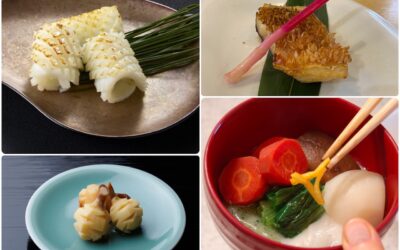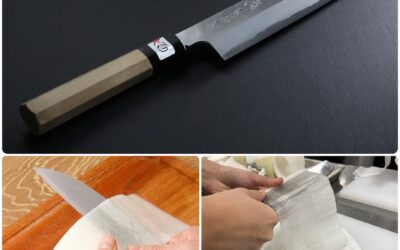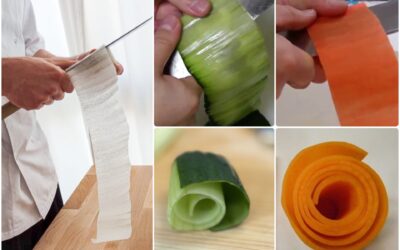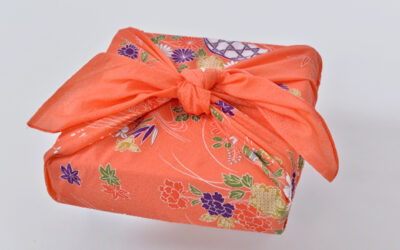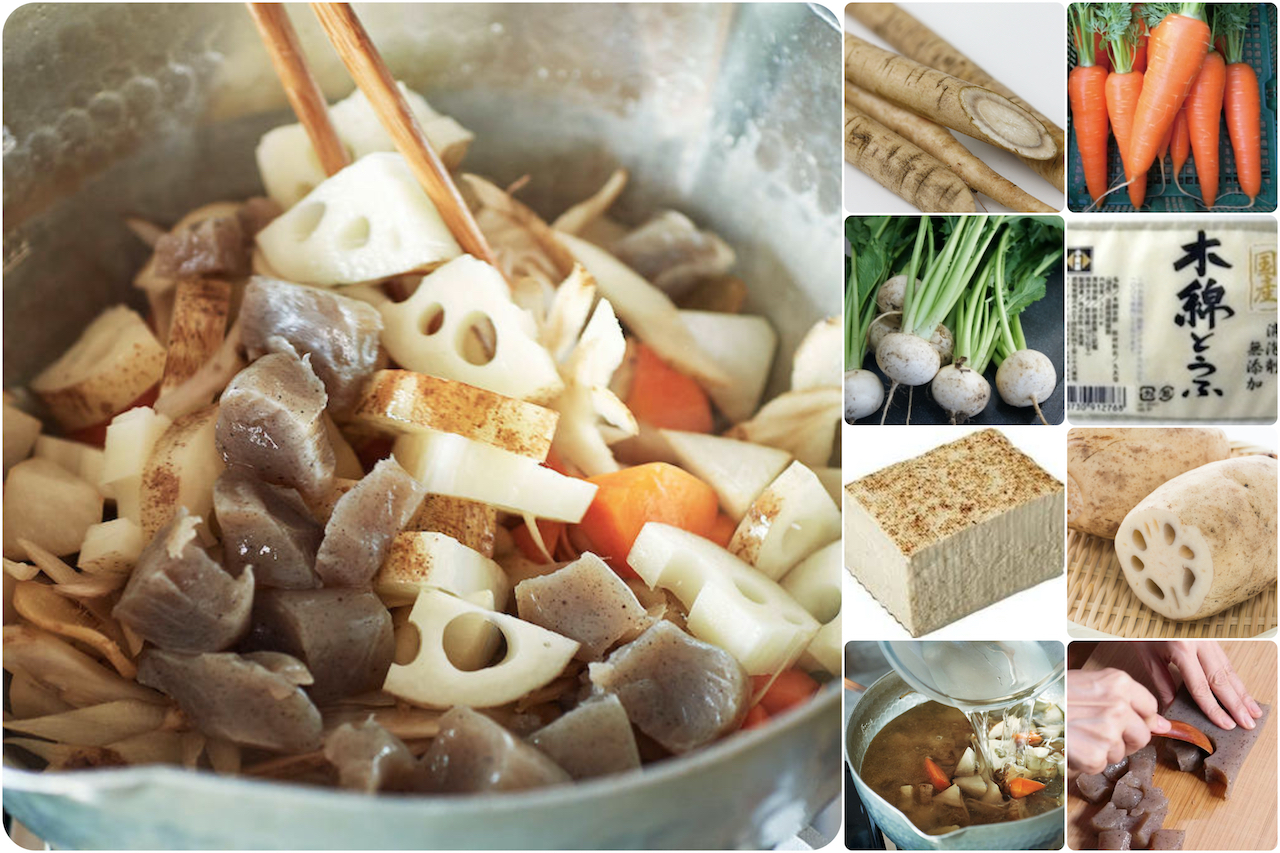
BASIC RECIPE to assemble KENCHIN-JIRU
When autumn evenings turn chilly, its time for a warm bowl of nutritious chowder.
The origins of this one, kenchin-jiru, is thought to be resourceful monks at Kenchō-ji Temple (建長寺) in Kamakura. Utilizing vegetable scraps and bits of tōfu, temples throughout Japan have their own versions of kenchin chowder. Nearly every household and casual eatery, too, will serve a similar soup brimming with vegetables and tōfu. Some versions will have a clear broth, others will be thickened and seasoned with miso.
Similar frugal chowders can be found throughout Japan and Asia.
Here is a BASIC RECIPE for KENCHIN-JIRU to get you started in exploring the many possibilties.

Choice of vegetables... and types of tōfu
Get started assembling kenchin-jiru: Choose the vegetables… and types of tōfu you want to use…
Root vegetables are wonderful. Pictured here (upper left) are turnips with their edible greens… below them is kabocha (most varieties have a tough skin that needs to be partially peeled)… to the right shiméji mushrooms and abura agé (fried tōfu)… carrots (and their edible green tops… lotus root (scrub or peel skin before slicing)… firm momen tōfu… konnyaku (a jelly-like loaf processed from a corm by the same name, konnyaku) “pinched” into bite-sized pieces with the edge of a spoon.
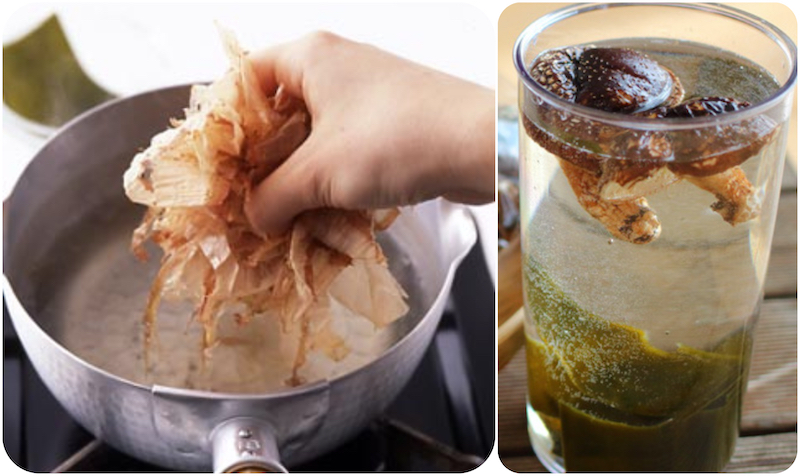
Choice of stocks
The classic version of kenchin-jiru typically uses a plant-based stock (a simple dashi made from kelp alone or Sankai Dashi (kelp and dried mushrooms). However, if you prefer a more complex, smoky flavor I suggest katsuo-infused stock instead.
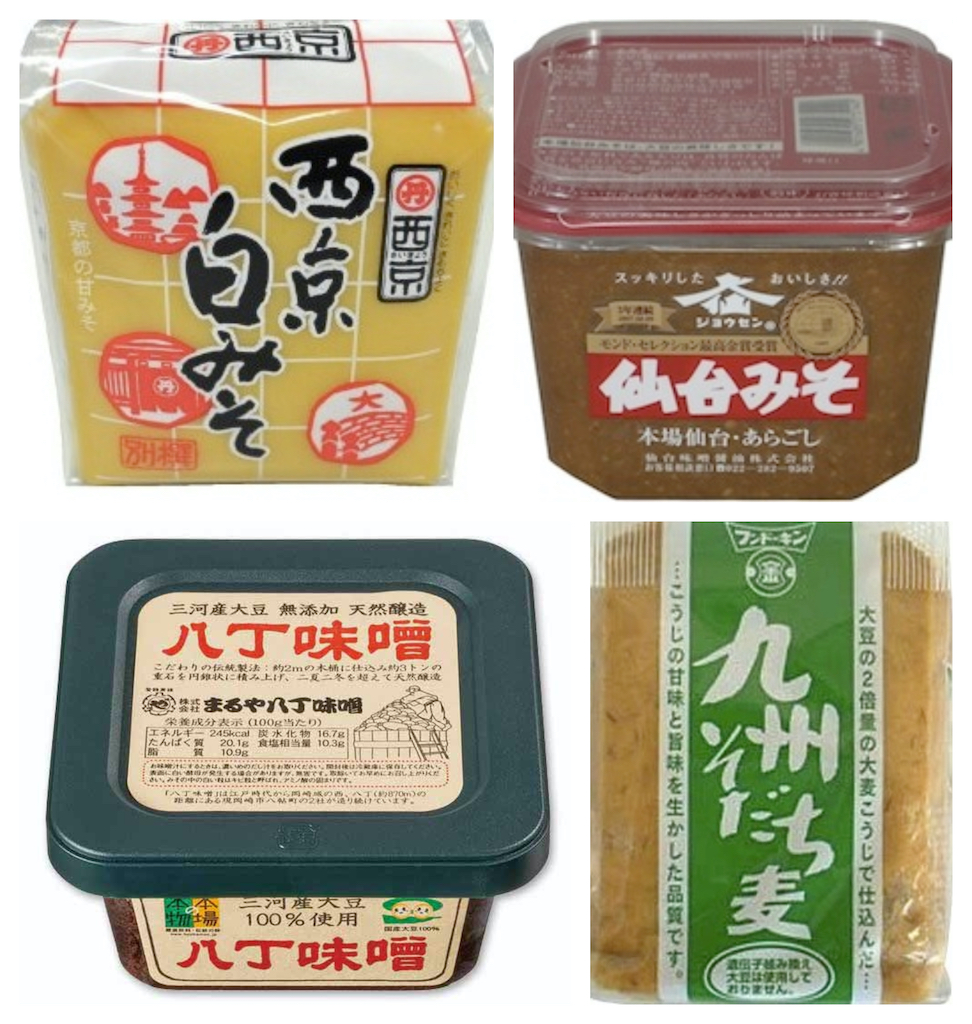
Thicken and season your chowder with MISO
If you like, you can thicken and season your kenchin broth with miso. Most Japanese households will have several kinds of miso on hand… often to accommodate seasonal ingredients (and a tendancy to choose saltier miso mixtures in hot weather, sweeter in cold weather) and regional preferences (those in the Nagoya area love Hatcho miso while most in Kyushu prefer mugi miso… folks in the Kansai area love Saikyo miso and many in the northern regions prefer Sendai miso). If you want to assemble a basic pantry so that you can mix-and-match to suit your preferences, I recommend these four:
Sweet and creamy SAIKYO SHIRO miso (upper left)
Robust and slightly textured SENDAI miso (upper right)
Smooth and slightly smoky, pure soy bean HATCHO miso (lower left)
Yeasty, barley-enriched MUGI miso (lower right).
Further information and inspiration on KENCHIN-JIRU available at my Kitchen Culture blog.

